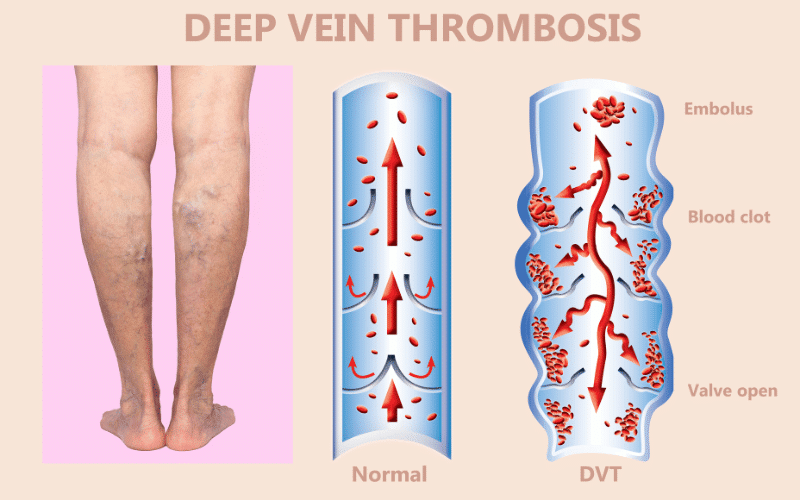Disease 6: Deep Vein Thrombosis

Deep vein thrombosis (DVT) is a blood clot that forms in a deep vein, usually in the legs. DVT can be dangerous because the blood clot can break off and travel to the lungs, causing a life-threatening pulmonary embolism.
Risk factors for DVT include prolonged immobility, such as bed rest or long-distance travel, surgery, injury, obesity, smoking, pregnancy, and certain medical conditions that increase clotting risk, such as cancer or genetic clotting disorders. Symptoms of DVT may include pain, swelling, warmth, and redness in the affected leg, although some individuals may not experience any symptoms.
Treatment for DVT typically involves anticoagulant medications, also known as blood thinners, to reduce the risk of clot formation and prevent the clot from growing. In some cases, more aggressive treatments like thrombolytic therapy to dissolve the clot or placement of a filter in the inferior vena cava to catch any clots that break off may be necessary. (6)